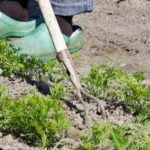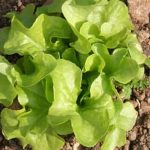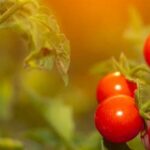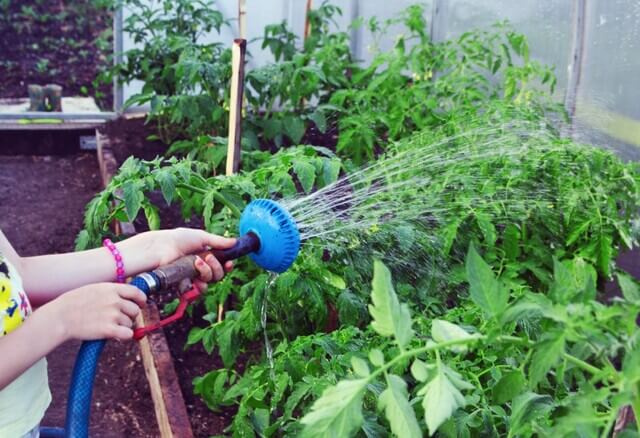Are you a beginner looking to start your own vegetable garden? Whether you have a green thumb or are just starting out, learning about vegetable gardening basics for beginners is the first step to growing your own fresh and healthy produce. In this article, we will cover everything from choosing the right location for your garden to harvesting the fruits of your labor. By the end of this guide, you will be ready to start your own thriving vegetable garden.
Starting a vegetable garden can be an exciting and rewarding experience. Not only does it allow you to enjoy fresh and organic produce, but it also provides a therapeutic and fulfilling hobby.
But before you get your hands dirty, it’s important to understand the basics of vegetable gardening. From selecting the best location for your garden to learning how to plant and maintain your crops, this guide will provide you with all the essential information you need to get started.
In this section, we will delve into the fundamentals of vegetable gardening for beginners. We’ll discuss the importance of choosing the right location for your garden, selecting which vegetables to grow, preparing the soil for planting, and understanding planting techniques and seed selection. By understanding these basics, you will set yourself up for success as you embark on your vegetable gardening journey. So let’s get started.
Choosing the Right Location for Your Vegetable Garden
When it comes to starting a vegetable garden, one of the most important decisions you will make is choosing the right location for your garden. The success of your garden depends greatly on its location, so it’s crucial to consider a few key factors before getting started.
Sunlight and Shade
One of the first things to consider when choosing a location for your vegetable garden is sunlight. Most vegetables thrive in full sunlight, so it’s important to choose a spot that receives at least 6-8 hours of direct sunlight each day. Take note of any trees or structures that may cast shadows and plan accordingly.
Soil Quality and Drainage
Another crucial factor to consider is the quality of the soil in your chosen location. It’s best to select an area with well-draining soil that is rich in organic matter. You can test the soil quality by observing how quickly water drains after a heavy rain, or by performing a simple soil test using a DIY kit or by sending a sample to a local agricultural extension office for analysis.
Accessibility and Convenience
Finally, consider the accessibility and convenience of the location you choose for your vegetable garden. Ideally, you’ll want a spot that is easily accessible from your home, with convenient access to water sources for irrigation. Additionally, consider any physical barriers such as fences or other structures that may obstruct access to your garden.
By carefully considering these factors when selecting the right location for your vegetable garden, you’ll be setting yourself up for success as you begin your journey into vegetable gardening basics for beginners.
Selecting the Best Vegetables to Grow for Beginners
When starting a vegetable garden as a beginner, it’s essential to choose the right vegetables to grow. Some vegetables are easier to cultivate and maintain than others, making them perfect for those who are new to vegetable gardening.
One of the best vegetables for beginners to grow is lettuce. Lettuce is easy to grow and doesn’t require a lot of space, making it perfect for those with limited gardening area. It also matures quickly, so you can enjoy your harvest in no time.
Another great option for beginners is tomatoes. Tomatoes thrive in many different climates and are versatile in their culinary uses. Carrots are also a good choice for novice gardeners due to their low maintenance and versatility in recipes.
In addition to lettuce, tomatoes, and carrots, other great options for beginner vegetable gardeners include green beans, radishes, and zucchini. These vegetables are relatively easy to grow and can be very rewarding for those just starting out with vegetable gardening.
| Vegetable | Reasons |
|---|---|
| Lettuce | Easy to grow, quick maturation |
| Tomatoes | Thrive in many climates, versatile |
| Carrots | Low maintenance, versatile in recipes |
Preparing the Soil for Planting
Before you start planting your vegetable garden, it’s essential to ensure that you have prepared the soil properly. The quality of your soil will greatly affect the health and productivity of your plants. Here are some steps to follow in preparing the soil for your vegetable garden:
1. Clear the area: Remove any weeds, rocks, or debris from the area where you plan to plant your vegetables. This will give your plants a clean slate to grow in and prevent competition for nutrients.
2. Test the soil: Use a home testing kit or send a sample of your soil to a professional lab to determine its pH level and nutrient content. This will help you understand what deficiencies your soil may have and what amendments it may need.
3. Amend the soil: Based on the results of your soil test, add organic matter such as compost, manure, or peat moss to improve its texture and nutrient content. You may also need to add lime or sulfur to adjust the pH level if necessary.
4. Till the soil: Use a garden tiller or hand tools to incorporate the amendments into the soil thoroughly. Aim for a loose, crumbly texture that allows for good drainage and root penetration.
By taking these steps to prepare your soil before planting, you’ll create a healthy environment for your vegetables to thrive in and set yourself up for a successful harvest.
Remember that every gardening situation is different, so be sure to conduct thorough research based on which plants you decide to grow in order to get started successfully with vegetable gardening basics for beginners.
Planting Techniques and Seed Selection
When it comes to vegetable gardening basics for beginners, understanding planting techniques and seed selection is crucial for a successful garden. Planting techniques involve knowing the proper depth and spacing for each type of vegetable. Most seeds will have instructions on the packet, but as a general rule, larger seeds are planted deeper than smaller ones. Spacing is also important to ensure that plants have enough room to grow without overcrowding.
In addition to planting techniques, selecting the right seeds is essential for beginner vegetable gardeners. It’s important to choose vegetables that are well-suited to your specific growing conditions, such as climate and soil type. For beginners, it’s recommended to start with easy-to-grow vegetables such as tomatoes, lettuce, carrots, and peppers. These vegetables are relatively low-maintenance and can be forgiving to new gardeners who are still learning the ropes.
Another important aspect of seed selection is choosing between heirloom and hybrid varieties. Heirloom seeds are open-pollinated and have been passed down through generations, while hybrid seeds are the result of controlled pollination between different varieties. Both types have their own advantages, so beginners should consider their individual preferences and goals when deciding which type of seeds to plant.
| Planting Techniques | Seed Selection |
|---|---|
| Proper depth and spacing | Choosing vegetables suited to growing conditions |
| General rules for larger and smaller seeds | Starting with easy-to-grow vegetables |
| Importance of spacing for plant growth | Consideration between heirloom and hybrid varieties |
Watering and Maintenance Tips for Beginner Gardeners
Proper watering and maintenance are essential aspects of successful vegetable gardening for beginners. Without consistent care, your plants may not thrive, and all your hard work could go to waste.
When it comes to watering your vegetable garden, it’s important to find the right balance. Overwatering can lead to root rot and other issues, while underwatering can cause stunted growth and poor yield. The best practice is to water deeply but infrequently, allowing the soil to dry out slightly between watering sessions. Depending on the climate and weather conditions in your area, you may need to adjust your watering schedule accordingly.
In addition to watering, regular maintenance tasks are crucial for a healthy vegetable garden. This includes weeding, pruning, and fertilizing as needed. Weeds can compete with your vegetable plants for nutrients and water, so it’s important to keep them in check. Pruning helps promote better air circulation and prevents overcrowding among your plants. And finally, fertilizing provides essential nutrients that may be lacking in the soil.
By staying on top of watering and maintenance tasks, beginner gardeners can ensure that their vegetable gardens have the best chance of thriving. With dedication and attention to detail, you’ll be able to enjoy a bountiful harvest from your own backyard. Remember that practice makes perfect, so don’t be discouraged if you encounter challenges along the way; learning from experience is an important part of becoming a successful vegetable gardener.
Pest and Disease Management for Vegetable Gardens
Pests and diseases can be a major challenge for beginner vegetable gardeners, but with the right management techniques, you can keep your plants healthy and thriving. Here are some tips for identifying, controlling, and preventing common pests and diseases in your vegetable garden.
Identifying Common Pests and Diseases
One of the first steps in managing pest and disease problems in your vegetable garden is to learn how to identify them. Some common pests that may affect your garden include aphids, caterpillars, slugs, and snails. Common diseases to watch out for include powdery mildew, blight, and root rot. By familiarizing yourself with the signs of these pests and diseases, you can take action early to prevent widespread damage to your plants.
Controlling Pest and Disease Problems
There are several methods for controlling pests and diseases in your vegetable garden. For pest control, you can use organic insecticidal soaps, neem oil, or beneficial insects such as ladybugs or praying mantises. Physical barriers like row covers can also help protect your plants from pests. When it comes to managing diseases, practicing good garden hygiene by removing diseased plant material, rotating crops, and providing adequate air circulation can help prevent the spread of diseases.
Preventing Future Pest and Disease Issues
To prevent future pest and disease problems in your vegetable garden, it’s important to practice good gardening habits. This includes regular monitoring of your plants for signs of trouble, maintaining healthy soil through proper watering and fertilizing practices, and avoiding overcrowding of plants which can lead to increased disease susceptibility.
Additionally, selecting disease-resistant varieties of vegetables can provide added protection against common ailments. By taking a proactive approach to pest and disease management in your vegetable garden, you can enjoy a bountiful harvest throughout the growing season.
Harvesting and Enjoying the Fruits of Your Labor
Once you have successfully planted and tended to your vegetable garden, the exciting part comes when it’s time to harvest and enjoy the delicious produce you’ve worked hard to grow. Harvesting your vegetables at the right time is crucial for enjoying them at their peak flavor and nutrition.
Different vegetables have different signs that indicate they are ready to be harvested. For example, tomatoes should be picked when they are fully red and slightly soft to the touch, while carrots can be harvested when they reach a desirable size and color.
It is important to handle your harvested vegetables with care to prevent any damage that could affect their quality. Use pruning shears or a sharp knife to cut fruits and vegetables from the plant, rather than pulling them off by hand, which can cause bruising or tearing.
After harvesting, it’s best to store your vegetables in a cool, dark place if you don’t plan on eating them right away. Certain vegetables like onions and potatoes require curing before storage, while others like lettuce and herbs should be refrigerated for longer shelf life.
Of course, the ultimate reward of vegetable gardening is enjoying the fresh produce you’ve grown. Whether you’re making a simple salad with homegrown lettuce and tomatoes or preparing a hearty stir-fry with freshly harvested bell peppers and snap peas, there is something truly satisfying about eating food that you’ve nurtured from seed to table.
The flavors of homegrown vegetables are often more intense and vibrant than those of store-bought produce, making all the effort put into vegetable gardening well worth it in the end. It’s this sense of accomplishment and connection to nature that motivates many beginner gardeners to continue honing their skills and expanding their gardens year after year.
Resources and Further Reading for Beginner Vegetable Gardeners
In conclusion, vegetable gardening can be a rewarding and enjoyable hobby for beginners. By following the basics outlined in this article, novice gardeners can successfully grow their own fresh produce right at home. From choosing the right location and vegetables to preparing the soil and managing pests, there are many factors to consider when starting a vegetable garden.
One of the most important aspects of successful vegetable gardening is understanding the needs of each type of plant and providing them with proper care. Watering and maintaining the garden are essential tasks that beginner gardeners should familiarize themselves with. It’s also important to stay vigilant against pests and diseases that can harm your plants, but with proper management techniques, these challenges can be overcome.
For those who want to deepen their knowledge of vegetable gardening basics for beginners, there are plenty of resources and further reading available. Whether it’s books, online articles, or local gardening clubs, there are many ways to continue learning and improving your skills as a vegetable gardener. With dedication and patience, even those new to gardening can enjoy a bountiful harvest of fresh, homegrown vegetables.
Frequently Asked Questions
How Do I Start a Beginner Vegetable Garden?
Starting a beginner vegetable garden can be both exciting and rewarding. Begin by selecting the right location with plenty of sunlight and well-draining soil. Take time to research and choose easy-to-grow vegetables that suit your climate and space.
What Vegetables Are Easiest to Grow for Beginners?
For beginners, some of the easiest vegetables to grow include tomatoes, cucumbers, zucchini, lettuce, and radishes. These vegetables are relatively low-maintenance and can thrive in different growing conditions, making them ideal for those new to gardening.
What Vegetables Should a First Time Gardener?
First-time gardeners should consider growing vegetables like tomatoes, peppers, carrots, lettuce, and herbs such as basil and parsley. These are all relatively simple to cultivate and can provide a good foundation for learning essential gardening skills like watering, fertilizing, and pest control.

If you’re looking to get into vegetable gardening, or are just looking for some tips on how to make your current garden better, then you’ve come to the right place! My name is Ethel and I have been gardening for years. In this blog, I’m going to share with you some of my best tips on how to create a successful vegetable garden.





